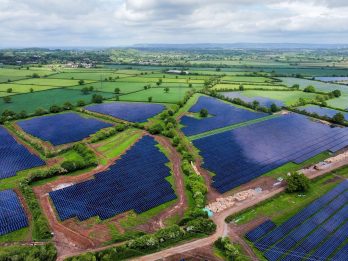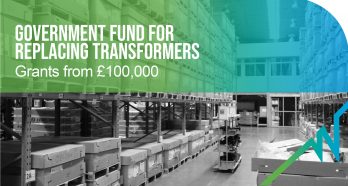What is Amorphous Metal Technology?
Essentially, amorphous metal technology is the result of experimental science; the product of an ongoing quest to solve problems and improve performance; the consequence of never standing still.
What are amorphous metals?
By rapidly cooling a molten metal, it is relinquished of the time needed to form the same crystalline structure found in other ordinary metals. This process forces atoms to become arranged in a dense, randomly configured formation, similar to that of a liquid. The end result is a solid material known as amorphous metal.
The alloys have no regular atomic structure, or order, which makes the amorphous metal very strong as well as highly elastic. This is uncommon for a metal, therefore scientists began to experiment. Due to the lack of systematic structure, they soon discovered that the metal could be blown and moulded in the same way as plastic, spawning the name nickname ‘The Metallic Glass’.
What are amorphous metals used for?
To begin with, due to the metal’s ability to be easily moulded, amorphous metal technology was applied to many everyday items such as watches, tennis rackets and golf clubs. Surgical instruments soon followed suit, along with consumer electronics.
However, once the special magnetic properties were highlighted within amorphous metals, avenues were opened in electronic article surveillance. In other words, amorphous technology was utilised to prevent the likes of shoplifting, theft of property from offices and books from libraries, by applying a special tag
The latest, and possibly most significant, development is the amorphous core in electrical transformers. It has been proven that an amorphous core can critically reduce electrical losses in transformers, helping businesses and organisations lower their operating costs and environmental impacts.
How can amorphous metal technology help to improve efficiency?
Firstly, power and distribution transformers are responsible for transforming voltage into convenient forms of power for usage or transmission, and by operating with the traditional magnetic cores significant electrical losses occur.
Energy wastage on this scale (when you consider the vast amount of power transformers in the world) is a worrying issue. According to SEEDT, energy-efficient distribution transformers could potentially save Europe an “estimated 22 TWh, as far as utilities are concerned (which is the equivalent of 9 million tons of CO2), and 5 TWh in industry and the tertiary sector. Together this is equivalent to the output of the EU’s three largest coal-fired electricity plants, or the consumption of 5.1 million homes.”
The latest Eco Design Directive figures, however, refer to an estimated total losses of 93.4TWh with a lower saving of 16.2TWh by 2025. Either way, what’s noticeable is that there are losses and wastage and amorphous technology can help to combat this.
A careless waste of energy like this comes at both an economical and environmental cost. EU leaders have recognised this and imposed legislation to drive energy efficiency standards for transformers. Transformers, such as the Wilson e2 super low loss and now Wilson e3 ultra low loss amorphous transformer, are already meeting and exceeding the EU Eco Design standards set to come into force in 2021. This level of performance has seen significant savings made in both energy and money, for many businesses and organisations.
Why are amorphous metal distribution transformers so successful?
Amorphous metal distribution transformers (AMDTs), alongside smart coil designs can provide significant reductions in both no-load and load losses, resulting in higher energy efficiency and lower utility bills.
Today, in most transformers, no-load losses are a result of the magnetising current required to power the transformer core. They are further influenced by the magnetic properties of the materials used to construct the core itself, and its overall design. They are constant, regardless of electrical load, 24 hours a day, 365 days a year. Therefore, by operating on such a level, some input power is lost as heat (energy wastage).
Amorphous cores are often a unique alloy of iron, silicon and boron. The absence of a crystalline structure enables easy magnetisation, paired with low thickness and high electrical resistivity, helps to greatly reduce no-load losses.
What’s more is that amorphous metal lower overall losses than the current alternatives on the market. In fact,when compared to older transformer models, it can be upto 80% lower.
How affordable are amorphous transformers?
Further advancements in technology have resulted in amorphous transformers becoming more compact, reducing the cost of material and installation. Nowadays, amorphous transformers are extremely cost-competitive, when compared with conventional CRGO transformers.
It’s important to factor in the lifetime performance of an amorphous transformer and the potential savings to be had, when considering costs of purchase. The upfront cost of such an advanced piece of equipment may seem intimidating but the operational expenditure thereafter is minimal. The lifetime financial savings and reduced CO2 emissions are two long-term factors that are hard to disregard.
The Wilson E2 Super Low Loss Amorphous Transformer
The Wilson e2 Amorphous Transformer is recognised as the industry leader, after Wilson Power were responsible for pioneering amorphous technology in the UK. Since its arrival it has undergone continuous development to make it the must have power distribution transformer for energy-efficiency. With a potential £100,000 of savings to be had over its lifetime, it’s no surprise that Wilson Power Solutions have seen over 750 successful installations throughout the UK.
To learn more about amorphous technology, you can download a further study here.
 14 Aug 2018
14 Aug 2018IETF: Industrial Energy Transformation Fund – Phase 3
Industrial emissions account for around 18% of UK emissions. To reach the Net Zero target in 2050, industrial emissions need to fall by around 90% from today’s levels. Industrial Energy Transformation Fund (IETF) launched Phase 3 of industrial grants on Monday 29 January 2024, with the closing date on Friday 19 April 2024, and aims […]
 23 Feb 2024
23 Feb 2024Guide to Replacing Transformers
The third part of the Intergovernmental Panel on Climate Change (IPCC) Sixth Assessment Report (AR6) was published earlier this month. Scientists warn that limiting global warming to 1.5°C is beyond reach but restricting temperature rise to no more than 1.5C to 2C could be the range that will minimize the likelihood of reaching critical environmental […]
 22 Apr 2022
22 Apr 2022IETF: Industrial Energy Transformation Fund FAQ
The Industrial Energy Transformation Fund (IETF) was designed by the UK government to encourage energy-intensive businesses to cut their carbon emissions and reduce their energy waste by switching to energy-efficient low-carbon technologies. A budget of £315 million was allocated by the government to be spent through the IETF. BEIS manages England, Wales and North Ireland’s […]
 4 Apr 2022
4 Apr 2022











